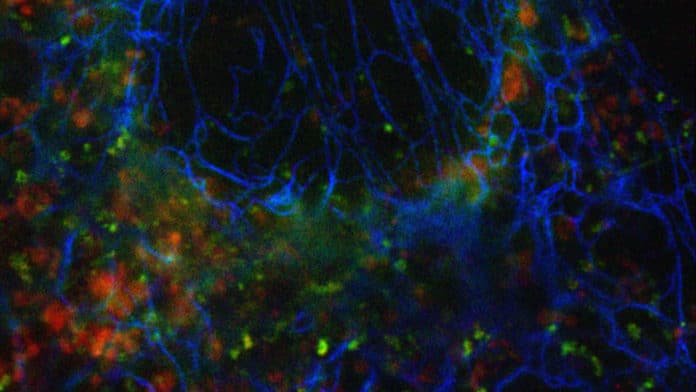Using nth order Spatio-temporal cross-cumulants, the spatial resolution and the sampling can be increased up to n-fold in all spatial dimensions.
In a new study, EPFL scientists extended the cumulant analysis onto the spectral domain and proposed a multicolor super-resolution scheme. Scientists are working on super-resolution optical fluctuation imaging (SOFI) to increase the spatial resolution and sampling in 2D and 3D.
SOFI analyzes higher-order Spatio-temporal statistics of a time-series of blinking fluorophores and does not require the isolation of individual fluorophores’ emissions. Furthermore, it is compatible with a broader range of labeling and imaging conditions, which simplifies fluorophore selection and experiments.
Now, scientists expanded the factual investigation into the unearthly space to make ready towards another methodology for multicolor super-goals imaging.
The idea behind the multicolor SOFI approach is the following: In classical multicolor imaging, crosstalk between different spectral channels of the microscope should be avoided. Here, the scientists exploit the crosstalk for generating additional color channels. They apply cross-cumulant analysis between multiple simultaneously acquired spectral channels. The statistical analysis allows them to supplement the physical detection channels provided by the microscope with additional virtual spectral channels.
Kristin Grußmayer, one of the lead authors of the study, said, “Only the signals that are spatially and temporally correlated in the different spectral channels will appear in the virtual channels. We are picking up exactly the crosstalk that everyone else wants to get rid of. The additional computationally generated spectral channels, together with linear unmixing, allow the imaging of more distinct fluorophore colors than recorded physical detection channels.”
The study offers the theory behind spectral cross-cumulant multicolor SOFI. It also suggested that the framework to optimize the spectral channels of the microscope for a given combination of fluorophores that should be imaged.
For the study, scientists used simulated datasets to verify for verification of their new multicolor approach should work for a wide range of labels with different photophysical properties, even for those with strongly overlapping emission spectra.
Kristin Grußmayer said, “We could show that our approach works for three-color imaging in fixed and in living cells for a variety of dyes and fluorescent proteins. The imaging can be performed using commercial widefield setups with two-channel image splitting units that are widely available. In principle, we are not limited to 3 colors.”
Journal Reference:
- K. S. Grußmayer et al., Spectral cross-cumulants for multicolor super-resolved SOFI imaging. DOI: 10.1038/s41467-020-16841-1
